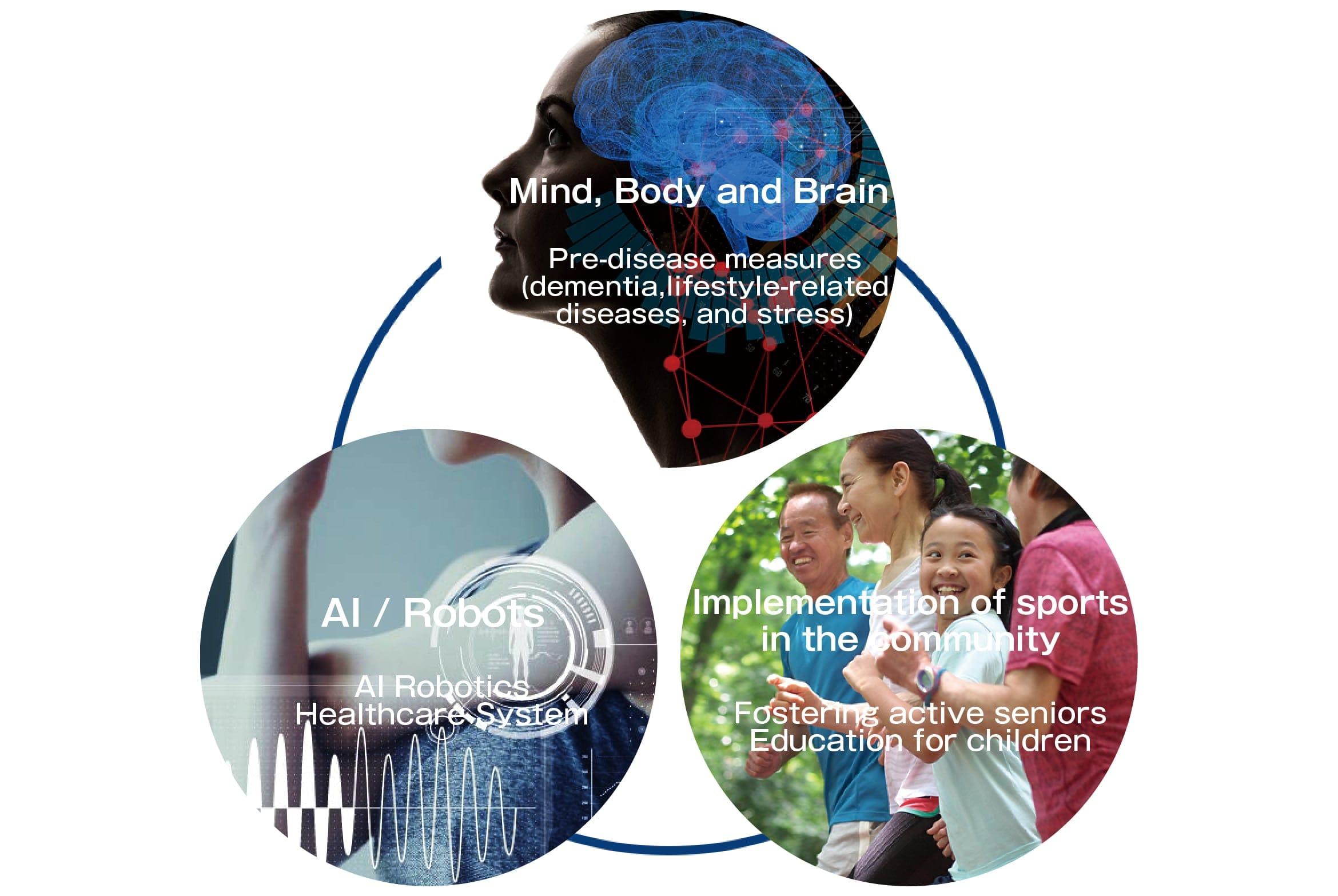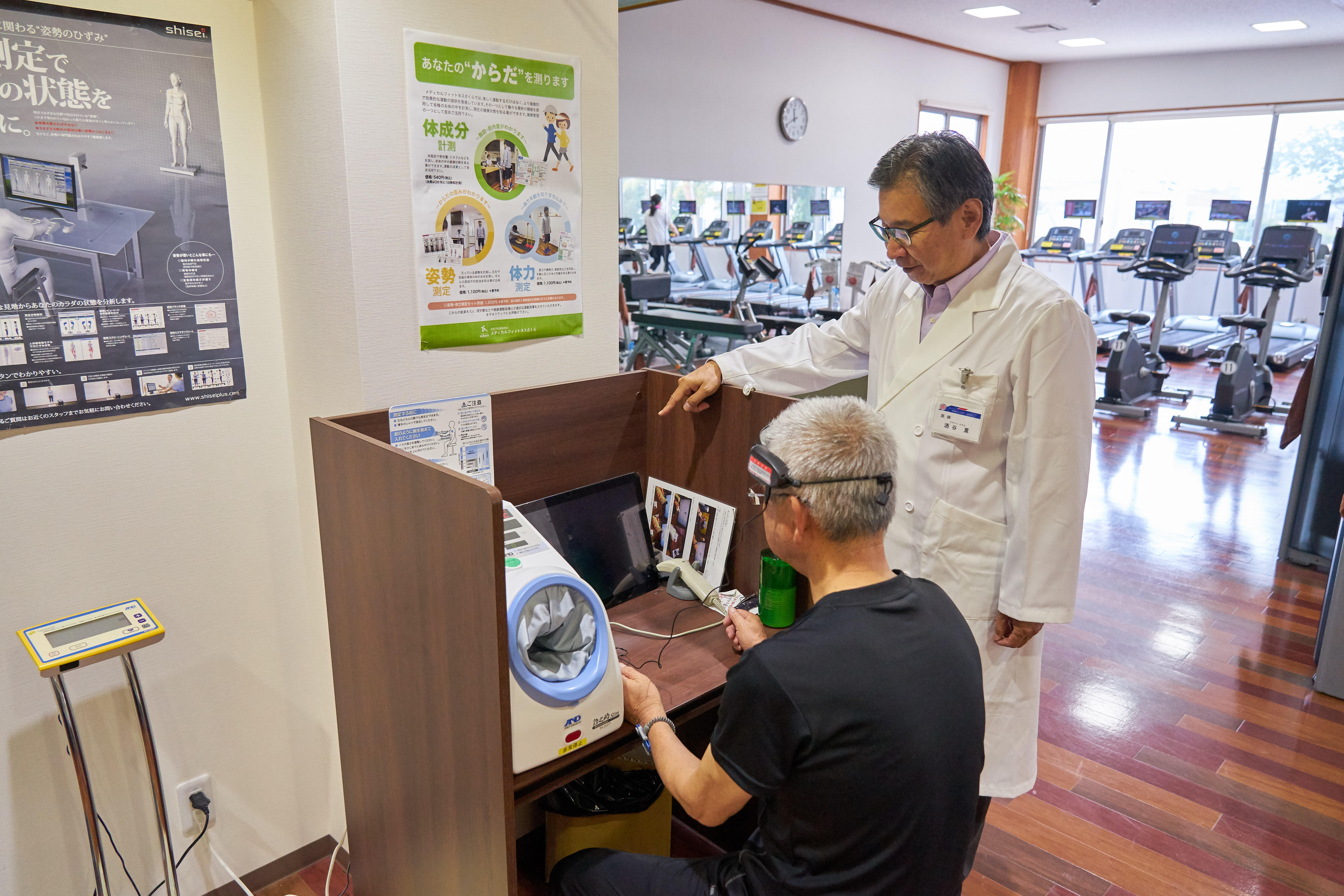We aim to conduct studies that elucidate the effects of the mechanisms of proper exercise on health and QOL, as well as recovery from disease; studies of assessment methods and presentation of the same;, and studies on methods of exercise that are safe and easy to adhere to, as well as the social implementation of the same.
Enhancing “Psycho-Physical-Cerebral Capacity” With Sports
With the aging of society comes an increasing importance for individuals to be able to move their bodies freely to improve QOL. For the actualization of these values, it is important for individuals to continue to exercise safely and effectively with consideration to individual levels and perspectives regardless of age, sex, or health condition. This course aims to elucidate the mechanisms of the effects of exercise on disease, health, and QOL; studies of assessment methods and presentation related to the same; and studies on methods of exercise that are safe and easy to adhere to, as well as social implementation of the same.

Study on Social Implementation Related to Sports Using Near Infrared Spectroscopy (NIRS) and Brain Function
Specifically, this entails, for example, research and development of systems and programs that support activation of the mind, body, and brain through sports; studies validating the effects of exercise; and research and development of exercise monitoring systems. In particular, we study and develop risk assessment methods for recognized public concerns such as lifestyle-related diseases, including stress and dementia, by applying NIRS artificial intelligence (AI) technology to a large proportion of medical examination information. We also aim to investigate how to implement Internet of Things (IoT) healthcare systems and the characteristics of active society building in the community toward the goal of sports industry promotion in the community.
Individuals will have heightened awareness of the efficacy of exercise in the promotion of health and preventing predisease states both through subjective experiences and objective assessments and presentations. Safe and effective exercise methods that are easy to adhere to will be implemented in society. These changes are expected to make routine exercise a habit for individuals. Furthermore, communication and interactions will be promoted through methods that will facilitate the introduction of sports into daily personal and social life and environment-building. This is also expected to build a community social infrastructure that will promote both the mental and physical health of its members. Moreover, instruction and training for human resources serving society are also expected through such research and education.

